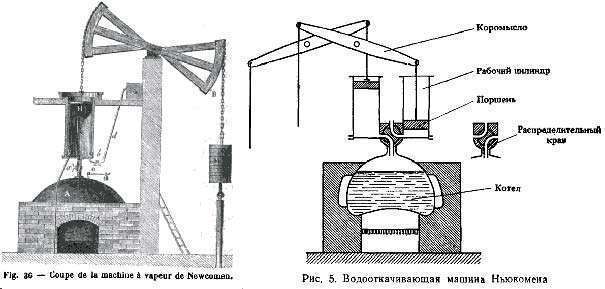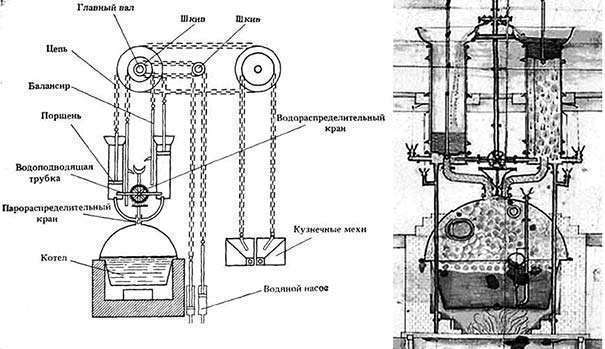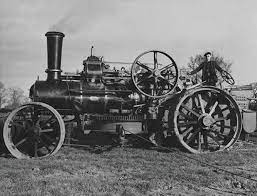The first steam engines in the world: the history of their invention
The steam engine became the first mechanical engine for which there was a wide practical application. The first reciprocating steam engines were first used in factory production, and later they were able to be connected to wheels and get self-propelled machines:
- steamships;
- locomotives;
- tractors;
- cars.
History of the invention of the steam engine
The basic principle of operation of any steam engine is that the energy of hot steam is converted into mechanical energy, which can be:
- reciprocating;
- rotational.
And the resulting mechanical energy can already be used for useful purposes. The principle of operation of a steam engine was clear to the ancient Greeks, but in the dark ages people forgot about it. Again, interest in this problem revived only in the 17th century. The Italian Giovanni Branca proposed a model of his own steam turbine in 1629. But due to unacceptably large energy losses, this first steam engine in the world did not find practical application.
Steam engine Denis Papin

On the eve of moving to Foggy Albion, Papin invented a powder engine. Gunpowder burning in the cylinder pushed the piston. The resulting powder gases were removed through the valve, and the remaining ones cooled, due to which a slight rarefaction occurred in the cylinder, and the pressure of the atmosphere returned the piston to its place.
Despite the fact that the idea itself promised considerable benefits, it did not bring dividends to its author. The fact is that a little earlier, Savery (an English mechanic) patented his steam pump, which at that time was the only way to use a steam engine. It so happened that the inventor of the first steam engine, Denis Papin, died in 1714 in London, being poor and lonely.
Thomas Newcomen’s car

- the design had a vertical cylinder with a piston (from Papen);
- steam was generated in a separate boiler, which operated on the principle of Savery’s invention;
- The tightness of the steam cylinder was ensured by skin tight around the piston.
By building up pressure, Newcomen’s device raised water from the mines. But it was very bulky and extremely voracious on coal. But these shortcomings did not prevent half a century of operation of this invention in the mines. Thanks to him, it became possible to revive mines that were previously abandoned due to groundwater flooding. But since his machine was a compilation of early inventions, Newcomen could not get a patent for it.
Watt machine
The decisive step was taken by the Briton James Watt, thanks to whose efforts a sufficiently powerful and compact first reciprocating steam engine appeared. As a mechanic at the University of Glasgow, in 1763 Watt took up the repair of Newcomen’s steam engine. During the repair process, he came up with a way to reduce her gluttony – her cylinder had to be kept warm.
But it was necessary to solve the problem of steam condensation. He caught the solution as he passed laundries, steam pouring from the lids of their boilers. He realized that steam is a gas, which should be put into a cylinder with reduced pressure. He achieved a tight piston-cylinder system by wrapping the first with oiled hemp rope, after which it became possible to abandon atmospheric pressure – a noticeable step forward.
Video of James Watt’s first steam engine
But in life, Watt was less lucky, and he had to pawn the patent for debts. After 3 years, he met a wealthy industrialist Matthew Bolton, who bought Watt his patents. Under his tutelage, Watt returned to work. As early as 1773, Watt’s new model demonstrated much lower coal consumption in tests than its predecessors required. And a year later, England began the industrial production of Watt machines. In 1781, Watt patented a steam engine that powered industrial machines. A little later, these same technologies began to be used for the movement of ships and trains, which will become a true technical revolution.
Polzunov steam engine

This work took 21 months, but when it was almost ready, the consumptive inventor died a few days before her first tests. Polzunov’s steam engine could operate continuously and automatically. This was proven as a result of tests conducted in 1766 by Polzunov’s students. A month later, the machine had already begun to work, not only recouping all the costs of its creation, but also bringing profit to the owners.
